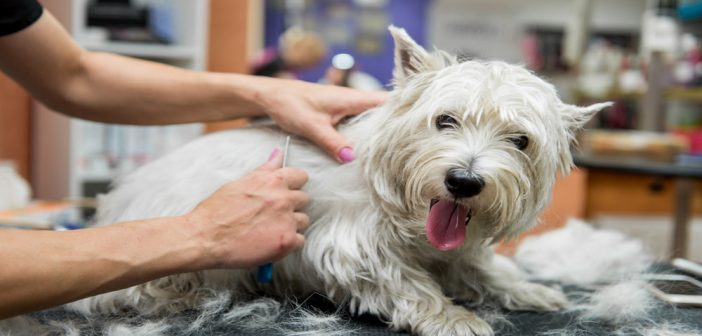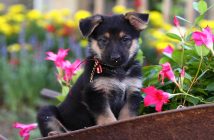Grooming is just as important for your dog in the winter months as it is in the summer. You may think you can go without grooming, but that couldn’t be further from the truth. You need to look out for specific issues that are particularly problematic when the weather turns cold. This guide will outline some tips and information on grooming dogs for winter weather.
Keep Them Warm
Whether taking a trip to the groomer’s or just giving a bath at home, it’s important to keep your dog warm. Turn up the heat in your home or in your car if your pet is going to get wet. Get the car started so it’s nice and warm by the time your dog is ready to come out of the groomer’s. You can also use products such as doggie sweaters or warmed blankets to make sure your pet stays warm for the trip. However, be careful when using a sweater, your dog could potentially overheat with one on. Remember, dogs have a fur coat that also protects them from the elements; added insulation is not always needed.
Dry Them Thoroughly
When bathing your dog; make sure he/she is towel dried immediately and thoroughly. Never allow your dog to go outside unless completely dry. This can take a long time for dogs with long or particularly thick coats, but it is necessary for your dog’s health and comfort. You can use a hairdryer to speed up the process, but allowing your dog to go outside before his/her coat is dry can lead to hypothermia, extreme discomfort or other serious health conditions.
Brush your Dog Regularly
Brushing your dog regularly has a number of benefits, especially during wintertime. Removing the excess fur will keep your pet’s coat breathable, which allows it to naturally insulate your dog. This regular routine removes mats and tangles that only get worse the longer they are left alone. This will help maintain proper blood circulation and the distribution of oils throughout the coat. One final benefit of brushing your dog regularly is it allows you to keep tabs on your dog’s skin. A heavy coat can hide injuries, sores or lumps that can be indicative of serious health problems that need to be brought to the attention of your veterinarian.
Give Them a Trim
Giving your dog a haircut can prevent things like branches and burrs getting caught on a dog’s long fur. Many breeds, of course, do not need haircuts, and in some cases it might be fine to let your dog’s hair/fur grow. However, do not neglect the regular grooming that comes with a haircut, such as bathing and brushing. Don’t cut the pet’s hair too short, he/she will feel cold and uncomfortable. Never shave a dog without professional recommendation, as it can ruin certain coat types. Professional groomers can recommend the best cut for your dog in the winter depending on the breed and the climate where you live.
Watch for Fleas
Flea infestations are bad news, they are disgusting for you and miserable for your pet.
It is a common misconception that dogs cannot get fleas in winter, but they can. Fleas can survive in warm conditions for months, on places like pet beds, carpet and cushions. This is particularly important if you live in a mild climate, where it’s never cold enough to fully kill off fleas. Remain vigilant throughout the entire year and use a flea preventative to avoid infestation. Be sure to launder and clean your dog’s items frequently.
Pay Attention to Their Paws
Paw pads and nails can easily get cracked or broken in the winter thanks to the cold, dry air and salt on the roads. Trim the long hair that grows out of the paw pads, snow can get caught in there, making it uncomfortable for your dog. Do regular checks to ensure there are no sores, growths, cracks or other unpleasant issues on your furry friend’s paws. You may have to trim your dog’s nails more often in the winter, because he/she may not be getting as many walks. Walks on concrete naturally wear down nails and prevent the need to trim nails often. Keeping your dog’s nails trimmed is important because long nails can not only destroy your carpets but also make it harder for your dog to keep balance on icy sidewalks. Dog boots are an option, though not every dog takes well to them.
Use the Right Shampoo
Dogs have a different pH balance on their skin than humans, making most human shampoos a poor choice to bathe dogs. Human shampoos can also cause an allergic reaction. Use a special dog shampoo or a gentle baby shampoo when it’s time to bathe your dog. There are also dry shampoo options if bathing regularly is not an option. Make sure your dog is rinsed thoroughly after a bath, so shampoo doesn’t remain in the fur, causing skin irritation.
Winter brings special needs for pets, especially when it comes to grooming. Whether your dog requires frequent grooming or just an occasional bath, it is important to keep to your pet’s grooming schedule during the winter and make some special accommodations due to the change in weather. If you follow these tips, both you and your dog can have a happy and healthy winter together.









